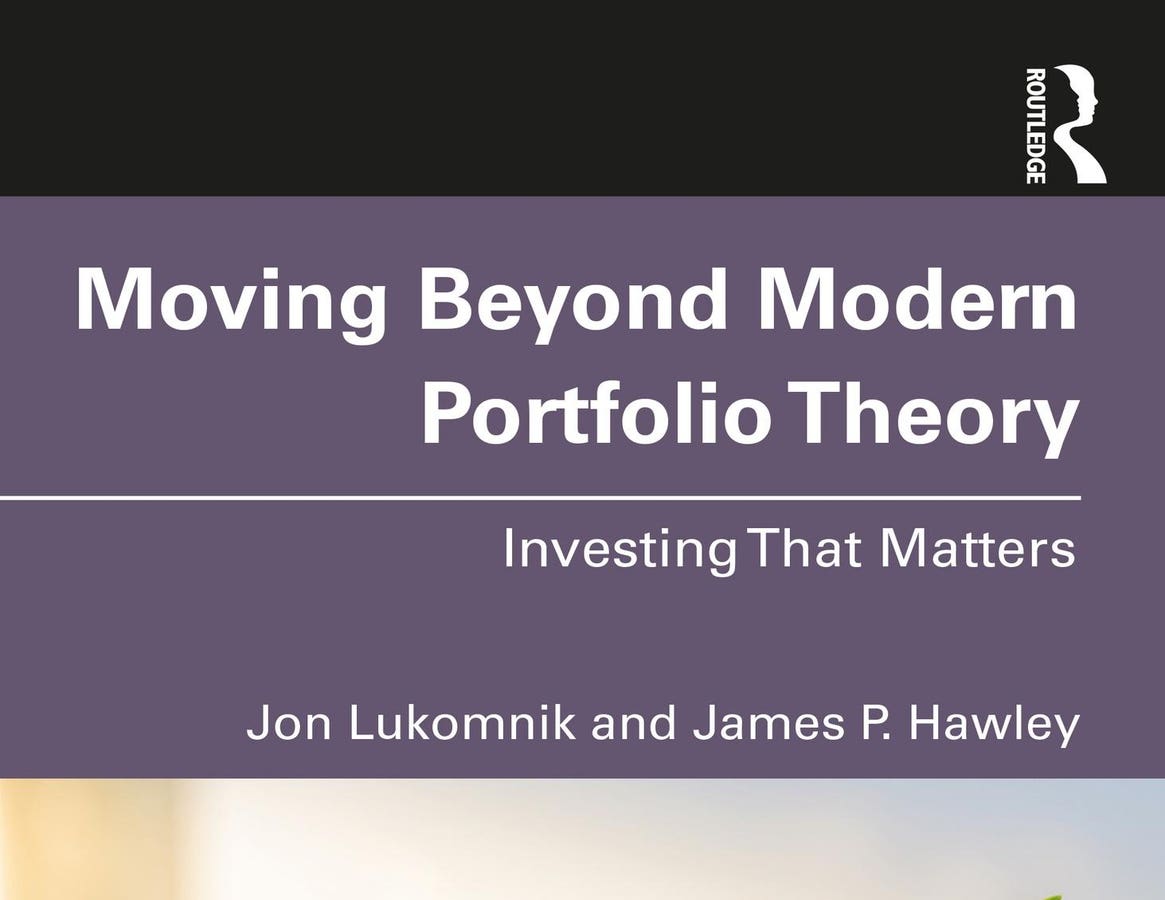I have previously written about the importance of system-level investing for managing systemic risks. In essence, this involves an investor considering the negative externalities being created by its portfolio of assets, a portfolio that could be earning an attractive return. Over time, these externalities will make it hard for a large investor to earn the necessary returns for its beneficiaries. In other words, there are feedback loops between the real world, where value creation and value destruction occur, and the capital markets, where they are priced. Each affects the other. Thus I’ve also written about why asset owners need to hold their asset managers to account for the impact of their portfolios on the physical and social world.

Book Cover to “Moving Beyond Modern Portfolio Theory” | ROUTLEDGE
While the notion of system-level investing is gaining currency, there is the challenge that the core of investing remains based on Modern Portfolio Theory (MPT), developed by University of Chicago-trained Harry Markowitz in 1952. MPT focuses on how to create portfolios from the capital markets, not on how to improve the overall return of the markets, since it does nothing to take account the impacts of these portfolios on the real world. In fairness to MPT, it was developed long before systemic risks, such as climate change and resource scarcity were an issue, or like inequality in its various forms were recognized as an issue.
Jon Lukomnik realized that more than 25 years ago, when he was in charge of the investments for the five New York City pension funds. At that time in aggregate they were the tenth largest pool of institutional capital in the United States, with some $80 billion in assets under management. (Today they now have more than $250 billion.) His epiphany occurred when he realized that he faced a simple but daunting challenge: Where to put $80 billon to earn a real rate of return above inflation? Forever.
Lukomnik quickly realized that healthy capital markets depended on healthy real-world environmental, social, and financial systems and that MPT provided no tool to help. Not surprising given the ideological basis of financial economics. Furthermore, in searching for other models, theories, and insights, Lukomnik came up empty. This is also not surprising since the notion of sustainable investing was in its early infancy. It is only recently that investors have come to recognize the importance of material environmental, social, and governance (ESG) issues at the stock and portfolio level. An important step but system-level investing is a step beyond that which requires a whole new theoretical basis.
The foundation for this, a quarter of a century later, is the new book “Moving Beyond Modern Portfolio Theory: Investing That Matters” by Lukomnik and James P. Hawley. This book is rapidly gaining attention in both the academic and practitioner communities. The two co-authors met while Lukomnik was at the New York City funds in the late 1990’s, when Hawley interviewed him as part of research Hawley was doing on institutional owners and corporate governance. Hawley went on to co-author what would become the seminal book on Universal Ownership, “The Rise of Fiduciary Capitalism.” Hawley explained that diversified investors should care about the externalities generated by the companies they own, such as greenhouse gas emissions, because those costs come back to bite them elsewhere in their portfolios.
SUBSCRIBE TO OUR NEWSLETTER
Subscribe our newsletter to receive the latest news, articles and exclusive podcasts every week


